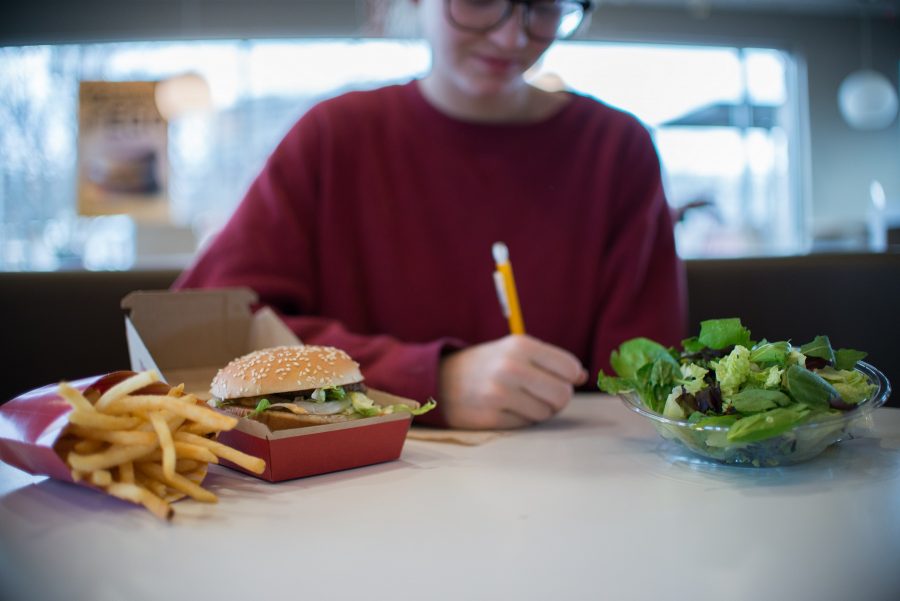Food tracking assignments cause students more harm than good
April 22, 2017
Breakfast: Fried egg: 90 calories, 7 grams fat. Toast: 70 calories, 0.9 grams fat.
Lunch: Chicken breast: 230 calories, 5 grams fat. One cup rice: 200 calories, 0.4 grams fat. Two carrots: 25 calories, 0.1 grams fat.
For some students in health, anatomy and science classes, eating a meal has become a taxing endeavor. As part of some assigned projects, students must track all the food and drinks they consume by keeping a log of food intake or calculating and recording calories, grams of fat and other levels of nutrients.
Though teachers claim these projects improve students’ diets, class curriculums should no longer include food and drink-tracking projects due to the prevalence of eating disorders among adolescents and the risk of exacerbating body-image issues.
Food-tracking assignments have the potential to complicate the recovery process for some students with eating disorders. Individuals affected by eating disorders often worry about their weight, counting calories and obsessively tracking their food, according to the National Eating Disorders Association (NEDA). Assignments requiring students to do just that could cause these issues to resurface.
An anonymous sophomore girl recovering from anorexia said she felt uncomfortable with an assignment in her anatomy class which required students to track food intake and fat content. Her eating disorder experience included a severe phobia of fat, and tracking fat in the project was an upsetting experience.
Food tracking could also cause healthy students to develop an unhealthy relationship with food. Monitoring food intake makes students feel self-conscious and guilty about what they eat, said a junior girl who did the assignment in middle school. Feelings of guilt or shame about food can cause individuals to begin restricting, purging, binging or exercising excessively, according to The Center for Eating Disorders at Sheppard Pratt.
Adolescents are already an at-risk demographic: up to 57 percent of adolescent girls engage in crash-dieting, fasting, self-induced vomiting or taking diet pills or laxatives, NEDA reports. This is especially concerning because eating disorders have the highest mortality rate of all mental illnesses.
Teachers are aware of this danger. Some, such as anatomy teacher Melanie Hudock, allow students with eating disorders to opt-out of the assignment; Hudock excused two students from a recent project after they emailed her with their concerns.
However, not all affected students feel comfortable speaking to teachers about such a personal topic. Discussing the issue is often the hardest part, the anonymous sophomore girl said. She didn’t feel comfortable asking to be excused from the assignment.
While tracking food intake allows students to reflect on their unhealthy habits, such as consuming too much fast food, salt, sugar and fat, there are safer methods to teach proper nutrition and the importance of a balanced diet.
Projects requiring students to perform a holistic reflection on their diet could provide the same hands-on experience without the risks. Students could analyze their consumption of different food groups without tracking specific values; classes could use MyPlate, the federal guideline for better nutrition as a reference for these projects.
From the extreme photoshopping of models to constant advertisements for diet and weight loss solutions, society is filled with images and messages pressuring adolescents to fit a certain body type. School must remain a safe haven from this toxic culture; teachers should save counting and calculating for the classroom, not the cafeteria.







